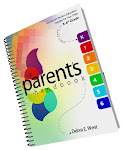Laying the Groundwork for Kindergarten Reading Success: Part 4
According to an article from education.com by Lawren Allphin a parent must lay the groundwork for their kindergarten child to be a successfl reader. Below is part 4 of the article:
Writing
Reading and writing go together like peanut butter and jelly. But for kindergarten kids, working on "writing" often means working on art. “Drawing is writing in its earliest form," Daniel says. "If you ask a child what his paper ‘says,’ he’ll tell you all about it." Children express their ideas through drawings long before they're able to express their ideas through words. Even if the only "words" kids can write are scribbles and lines, it's important to remember the goal: for a child to know that they can express themselves on paper. As they develop, Daniel says, children will begin to try their hand at letters and words. “When a child begins inventive writing, there’s no need to correct it. It’s important for the child to express himself, and have adults ‘ooh and ah’ over it,” she says.
Writing
Reading and writing go together like peanut butter and jelly. But for kindergarten kids, working on "writing" often means working on art. “Drawing is writing in its earliest form," Daniel says. "If you ask a child what his paper ‘says,’ he’ll tell you all about it." Children express their ideas through drawings long before they're able to express their ideas through words. Even if the only "words" kids can write are scribbles and lines, it's important to remember the goal: for a child to know that they can express themselves on paper. As they develop, Daniel says, children will begin to try their hand at letters and words. “When a child begins inventive writing, there’s no need to correct it. It’s important for the child to express himself, and have adults ‘ooh and ah’ over it,” she says.
To help your child make the connection that writing and drawing are a form of expression and communication, ask your child to narrate what they’ve drawn. When she tells you what her picture is about, write what she tells you on the page, so she'll begin to understand that words have meaning. "Knowing that her words can be put onto paper is a thrilling thing for a child,” Daniel says. Looking for other ways to incorporate writing into your child's day? Involve her in creating a grocery or packing list. Ask her what's missing and write down what she says. This will help her realize the utility in writing.
The recipe for preparing your child for reading success is quite simple: read every book on the shelf, chat until you’ve run out of things to say, and write on any blank writing surface you can find! Keep in mind that whatever stage your child is at in learning to read, your own enthusiasm is key. Support him in his journey with gusto.
And as the world’s young reader’s guru, Dr. Seuss, once said, “Sometimes the questions are complicated and the answers are simple.” In this case, the answer is simple: Enjoy reading, writing, and talking with your child and soon, there will be another independent reader in the house!










0 comments:
Post a Comment